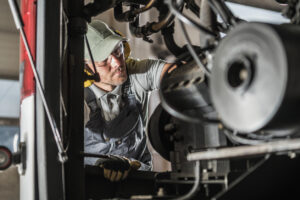SAN DIEGO — Rocketail, makers of aerodynamic tail systems for semi-trailers, has launched its Rocketail Wing, what the company calls the next generation rear drag reduction technology for trailers.
The Rocketail system is a verified EPA SmartWay trailer rear fairing technology for heavy-duty truck trailers that has exhibited a certified fuel efficiency improvement of over 3.58 gallons per 1,000 miles.
“Rocketail solves the ‘three D’s’ essential to performance for any aerodynamic tail system; drag, deployment and damage,” said Michael Militello, Rocketail CEO. “Our Rocketail Wing is integrated with the trailer door, so it’s always deployed, it extends a mere 14 inches from the rear of the trailer eliminating a main cause of rear collision damage in current tail systems, and it delivers proven drag-reducing performance.”
Featuring a “breakthrough” jet wing design, the one-piece airfoil was certified by MVT Solutions to provide a fuel economy improvement of 3.36 percent and by PIT Group to improve fuel efficiency by 3.30 percent in testing.
Constructed of lightweight high-impact, gas-infused polymers that are internally cross-braced, the wing-shaped airfoil has a compact footprint with no additional external or internal moving parts. It extends only 14 inches from the rear of the trailer compared to as much as four feet for other rear drag solutions on the market.
Militello said the Rocketail Wing is always deployed using unique swing-hinges that lock the wings in their maximum aerodynamic open position each time the doors are closed. The system shifts the wings flush with the sides of the trailer each time the doors are opened, allowing the doors to swing a full 270 degrees without being blocked.
Each Rocketail Wing attaches without guy-wires or struts with just two industrial-grade, stainless steel hinges. Installation, requiring only drill bits and tightening tools, takes two people about one hour to complete. Each wing weighs less than 25 pounds and requires minimal to no annual maintenance.
“Rocketail is maximally effective because its multi-element airfoil design has unique patented features that smooth and redirect rearward airflow behind a trailer while producing forward lift, similar to a wing on a jet aircraft,” Militello said. “Additionally, placing the device one inch away from the trailer wall avoids having the boundary air layer interact with higher volume, more uniform airflow. These two design features enable Rocketail to have a profile that’s 50 percent to 80 percent smaller than competitive designs.”
For more information about the Rocketail Wing or about Rocketail, visit www.rocketail.com.
The Trucker News Staff produces engaging content for not only TheTrucker.com, but also The Trucker Newspaper, which has been serving the trucking industry for more than 30 years. With a focus on drivers, the Trucker News Staff aims to provide relevant, objective content pertaining to the trucking segment of the transportation industry. The Trucker News Staff is based in Little Rock, Arkansas.














